|
|
|
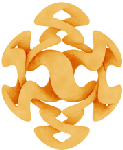
Symbolism
of the five Dhyani Buddhas
The five Dhyani Buddhas are mentioned in most of the tantric
systems and represent various physical and mental aspects. Here are given
only some of the most common explanations and representations of these so-called
'Heads of the five Buddha-families'.
It should be noted though that many different forms of each
deity exist, and different tantras can have slightly different explanations
(for example, in the Kalachakra tantra, six Dhyani-Buddhas are mentioned,
and most have different colors and shapes).
The five Dhyani-Buddhas are also often found on the crown
on the head of tantric Buddhas, like this:

| Mental symbolism of the five Dhyani Buddhas |
| Deity |
Delusion |
Enlightened Mind |
| Vairochana |
ignorance, delusion |
All-encompassing Dharmadatu Wisdom |
| Akshobhya |
anger, hatred |
Mirror-like Wisdom |
| Ratnasambhava |
pride, miserliness |
Wisdom of Equality |
| Amitabha |
desire, lust |
Discriminating Wisdom |
| Amogasiddhi |
jealousy, fear |
All-accomplishing Wisdom |
| Physical symbolism of the five Dhyani Buddhas |
| Deity |
Element |
Sense |
Medical/physical |
Organ |
| Vairochana |
space |
sight |
energy channels |
heart |
| Akshobhya |
water |
sound |
blood flow |
kidneys |
| Ratnasambhava |
earth |
smell |
flesh |
spleen |
| Amitabha |
fire |
taste |
body heat |
liver |
| Amogasiddhi |
air |
touch |
inner winds |
lungs |
| Names and relation to other Buddhas & Bodhisattvas |
| Deity (Sanskrit) |
English name |
Consort
|
Bodhisattva |
Wheel-turning
Buddhas |
| Vairochana |
Illuminating |
White Tara
(Vajradhatvisvari)
|
Samantabhadra |
Krakucchanda |
| Akshobhya |
Unshakable |
Locana
|
Vajrapani |
Kanakamuni |
| Ratnasambhava |
Jewel-born |
Mamaki
|
Ratnapani |
Kashyapa |
| Amitabha |
Infinite Light |
Pandara
|
Avalokiteshvara |
Shakyamuni |
| Amogasiddhi |
Conqueror |
Green Tara
|
Vishvapani |
Maitreya |
| Imagery symbolism of the five Dhyani Buddhas |
| Deity |
Color |
Direction |
Gesture (mudra) |
|
| Vairochana |
white |
Center |
Dharmachakra
Turning the
Dharma-wheel
(teaching) |
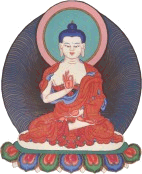 |
| Akshobhya |
blue |
East |
Bhumisparsa
Earth-touching |
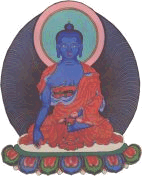 |
| Ratnasambhava |
yellow |
South |
Varada
Bestowing, giving |
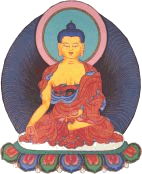 |
| Amitabha |
red |
West |
Dhyana
Meditation |
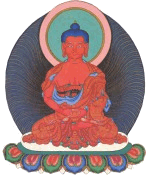 |
| Amogasiddhi |
green |
North |
Abhaya
Fearlessness |
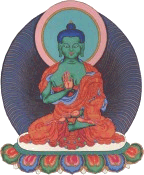 |
| More symbolism of the five Dhyani Buddhas |
| Deity |
Family symbol
and family |
Syllable |
Vehicle |
Aggregate |
| Vairochana |
Wheel

Tathagata |
OM |
dragon |
form
(Skt. rupa) |
| Akshobhya |
Vajra

vajra |
HUM |
elephant |
consciousness
(Skt. vijnana) |
| Ratnasambhava |
Jewel

ratna |
TRAM |
horse or lion |
sensation
(Skt. vendana) |
| Amitabha |
Lotus
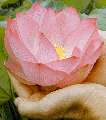
padma |
HRIH |
peacock |
perception
(Skt. sanjna) |
| Amogasiddhi |
Double
vajra
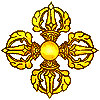
karma |
AH |
Garuda |
impulses
(Skt. Samskara) |
See also:
http://www.buddhanature.com/
http://www.kheper.net/topics/Buddhism/dhyanibuddhas.html
http://www.exoticindiaart.com/article/dhyanibuddhas
Last updated:
May 11, 2015 |











